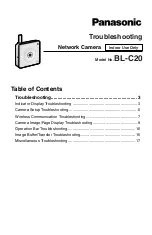
1.5
Transmission techniques
Modems for lower communication speeds (until 1200 bps) all work according to the same
principle: the so-called FSK modulation (Frequency Shift Keying). FSK works according to the
method of converting a digital signal, existing of zeros and ones, into tones.
The “0” has another pitch (frequency) than the “1”. The receiving modem recognizes the two
pitches that it receives and for its part, it forms again a digital signal out of the analog signal.
During the connection, the sender always transmits a tone. When at ease, the signal of the serial
port is “1” and the modem sends out the corresponding tone. We call this tone the CARRIER. The
receiving modem knows that there is a connection with another modem by detecting this carrier.
With FSK modulation, the pitch of the transmitted signal always has to be higher than the speed
of the transmitted data. Therefore, for a 300 bps connection, both tones have to be higher than 300
Hz (for example 1000 and 1200 Hz).
The telephone line is capable to pass on tones correctly until about 3000 Hz. This makes
communication in both directions possible: the fact is, the receiver sends back other tones, for
example tones of 1700 and 1900 Hz. As a result of this, the receiver is also sender in the other
direction. This is called a full -duplex connection.
It may be clear that for speeds higher then 2400 bps, it is not possible anymore to generate a “0”
and a “1” at a far enough distance from each other twice within the 3000 Hz of the telephone line.
Also at 1200 bps this is already a problem.
In this case, there are three possibilities:
1.
communication only in one direction: half duplex; at certain moments, a switch can be
made so that information can be sent back too;
2.
communication backwards (the other way around) at a lower speed, the so-called
backchannel. The latter is used a lot if much more information has to be sent in one
direction than in the other direction;
3.
modulation according to a technique, at which several bits are sent at the same time.
A half duplex connection with backchannel works as follows: If the one modem sends a 1200 bps
signal with tones of 1300 and 2100 Hz, the other modem can send back a 75 bps signal with tones
of 390 and 450 Hz.
Many computers are not capable to process this so-called split baudrate on the serial port just
like that. In that case, an extra task for the modem is speed conversion, also indicated as a speed
convertor. The modem converts for the computer a signal entering at 75 bps to a 1200 bps and on
the other side, the modem converts the 1200 bps signal of the computer to a 75 bps signal for
sending.
Other modulation methods are used for higher communication speeds (1200 bps and up).
Thus, at V22 (1200 bps full duplex), Quadrature Phase Shift Keying (QPSK) is used, at V22bis (2400
bps full duplex) Quadrature Amplitude Modulation (QAM), and at V32bis, V.34 (33600 bps full
duplex) Trellis Coded Modulation (TCM).
TRON SECURE 33.6
Allied Data Technologies BV -
Allways one step ahead
9
Summary of Contents for TRON SECURE 33.6
Page 2: ...Allied Data Technologies BV Allways one step ahead 2 TRON SECURE 33 6...
Page 4: ...TRON SECURE 33 6 Allied Data Technologies BV Allways one step ahead 4...
Page 6: ...Allied Data Technologies BV Allways one step ahead 6 TRON SECURE 33 6...
Page 34: ...TRON SECURE 33 6 Allied Data Technologies BV Allways one step ahead 34...










































